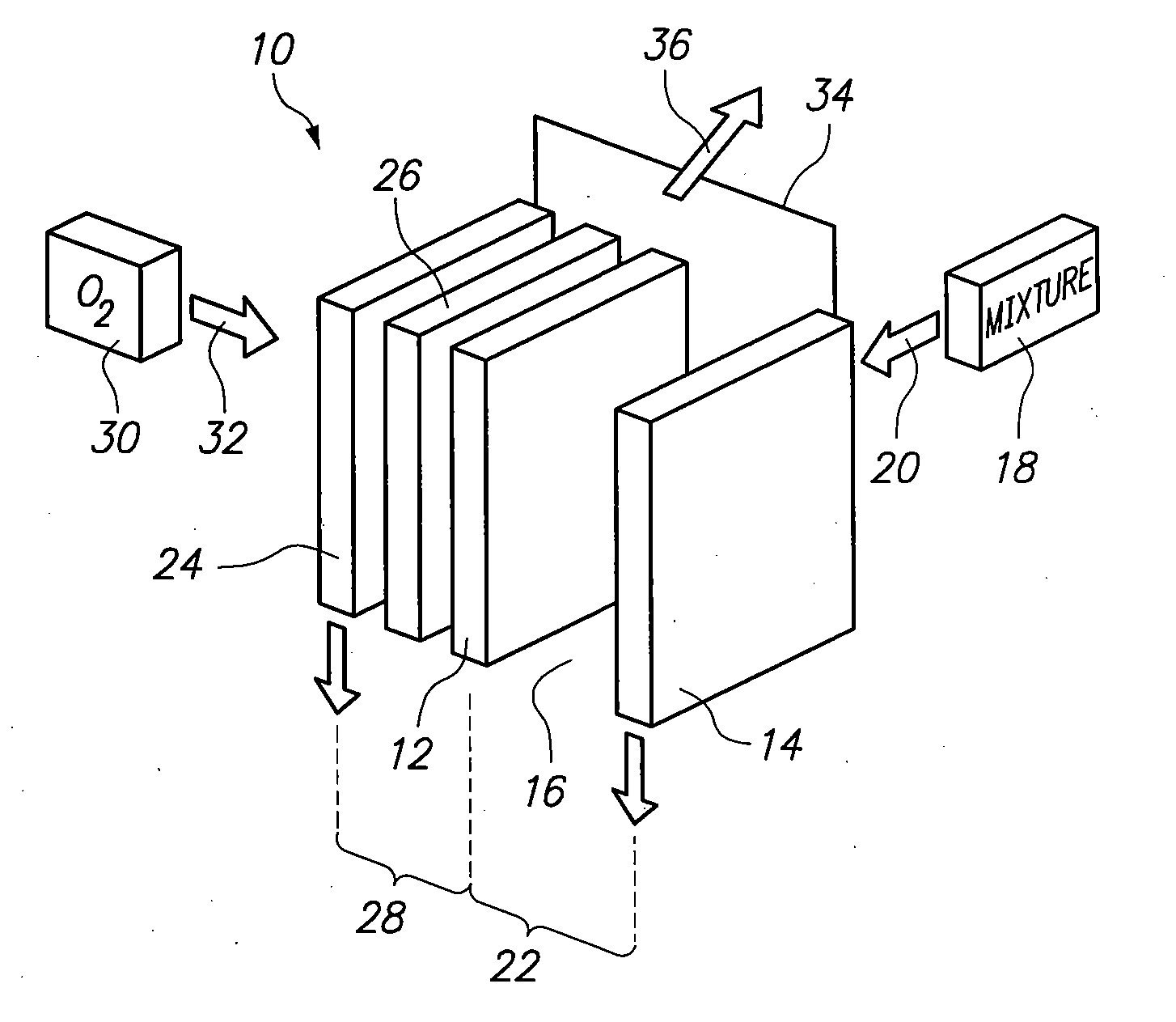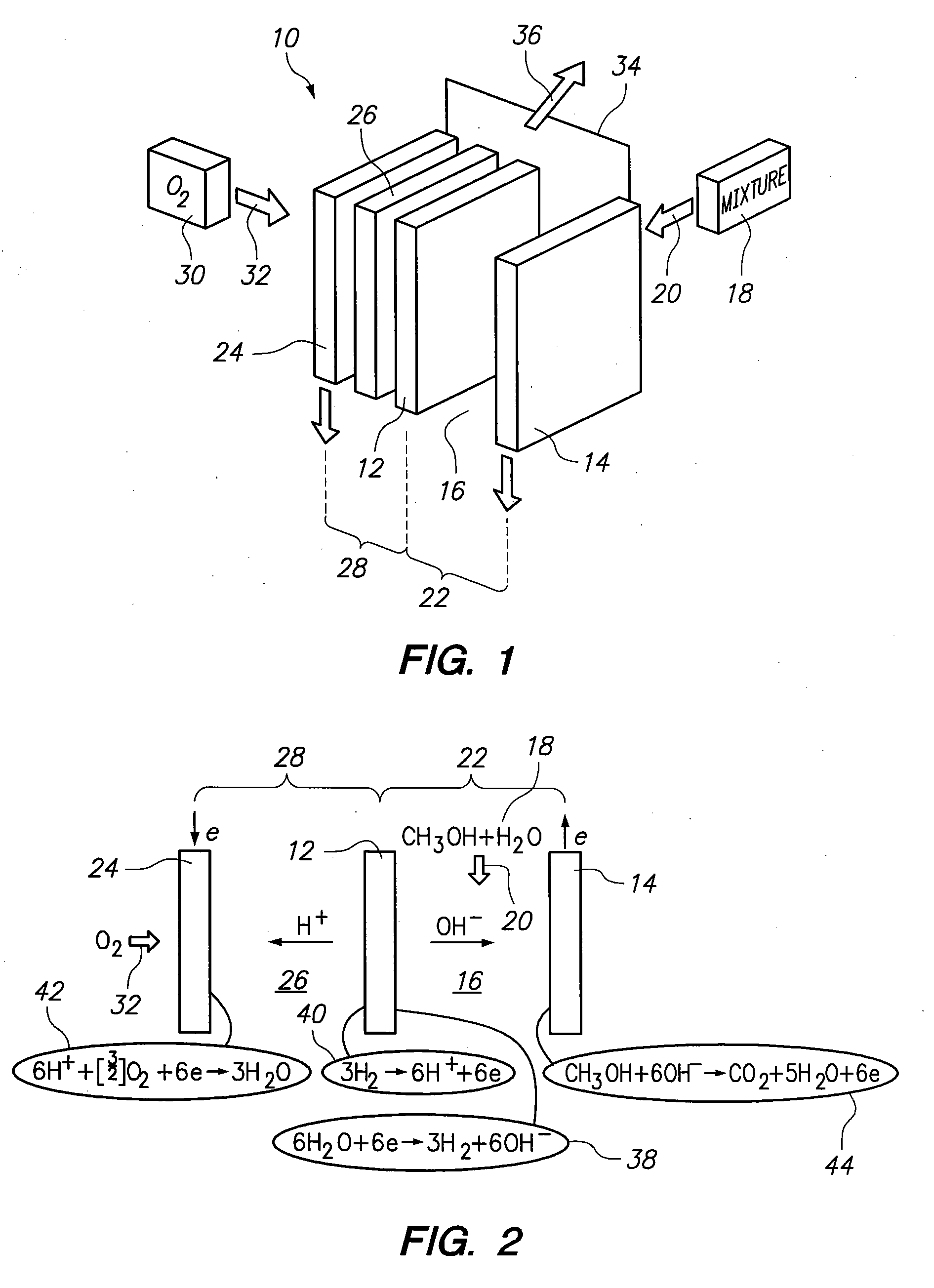Hydrogen fuel cell with integrated reformer
a fuel cell and reformer technology, applied in the field of hydrogen fuel cells, can solve the problems of incompatibility with high concentrations of methanol, inability to use hydrogen gas, and inability to meet the requirements of a dmfc,
- Summary
- Abstract
- Description
- Claims
- Application Information
AI Technical Summary
Problems solved by technology
Method used
Image
Examples
Embodiment Construction
[0017]Referring initially to FIG. 1, a power unit in accordance with the present invention is shown and is generally designated 10. As shown, the power unit 10 includes a mid-electrode 12 and an anode 14, with a gap 16 established therebetween. In this combination, the mid-electrode 12 acts as a cathode for an assisted electrolysis cell 22. FIG. 1 also shows that a source is provided to direct a liquid mixture 18 into the gap 16, as indicated by the arrow 20. Together, the mid-electrode 12 and the anode 14, along with the mixture 18, create the assisted electrolysis cell 22. Preferably, the mixture 18 that is used for the present invention is either methanol and water, or ethanol and water. It will be appreciated, however, that other carbon compounds may be used for the present invention. Further, it is important that the mid-electrode 12 be made of a hydrophobic, porous material, such as a porous carbon. Additionally, the anode 14 of the assisted electrolysis cell 22 can be coated ...
PUM
| Property | Measurement | Unit |
|---|---|---|
| electrical current | aaaaa | aaaaa |
| hydrophobic | aaaaa | aaaaa |
| alkaline | aaaaa | aaaaa |
Abstract
Description
Claims
Application Information
 Login to View More
Login to View More - R&D
- Intellectual Property
- Life Sciences
- Materials
- Tech Scout
- Unparalleled Data Quality
- Higher Quality Content
- 60% Fewer Hallucinations
Browse by: Latest US Patents, China's latest patents, Technical Efficacy Thesaurus, Application Domain, Technology Topic, Popular Technical Reports.
© 2025 PatSnap. All rights reserved.Legal|Privacy policy|Modern Slavery Act Transparency Statement|Sitemap|About US| Contact US: help@patsnap.com


